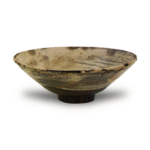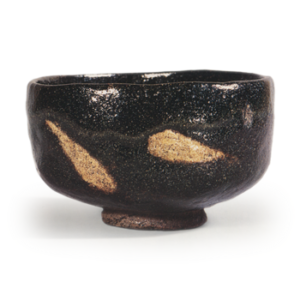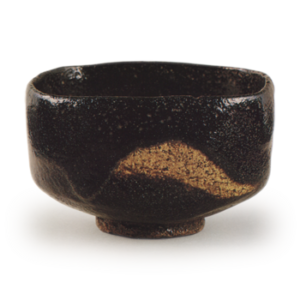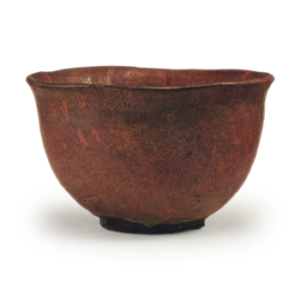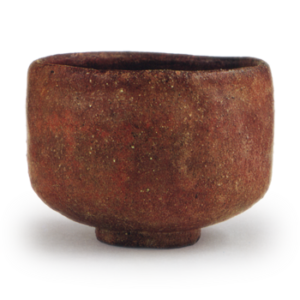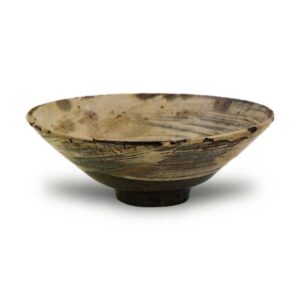
Hakeme is a technique of Korean ceramics in which white painted clay is applied with a brush in a single stroke. The base glaze can be blue, red, or rat-colored, and there are shades of gray in the brushstrokes. A tea bowl with white glaze on the entire surface is called “MUJI HAKEME. It is a sister product of Mishima, and the production area is almost the same. Tea masters classified them as Ko-hakeme, Suji-hakeme, Inahakeme, Hakeme-Mishima, Mokkome, Joseon-hakeme, and Muji-hakeme, according to their age, clay, glaze, and other factors. In the article on Koryo ware in the Manpo-Zensho, “Hakeme” refers to “handles that are striated and have a streaked appearance, both inside and outside or inside and outside, and are said to be cheap when they are produced in the sun. The brushwork is vigorous, and the brushwork is appreciated when it shows the same movement as when it was painted with a brush.
Joseon materials are the most suitable for brushwork, as they do not melt and flow, and the movement of the clay remains intact, but Japanese imitations of these materials melt into each other, which is undesirable. The brush marks in archaeology are quite different from the brush marks in Japan, which are made up of many parallel narrow grooves. This is the result of brushing the surface of the pottery with a splintered board, causing the grain of the wood to appear as thin stripes. This method of adjustment is characteristic of Yayoi earthenware.

